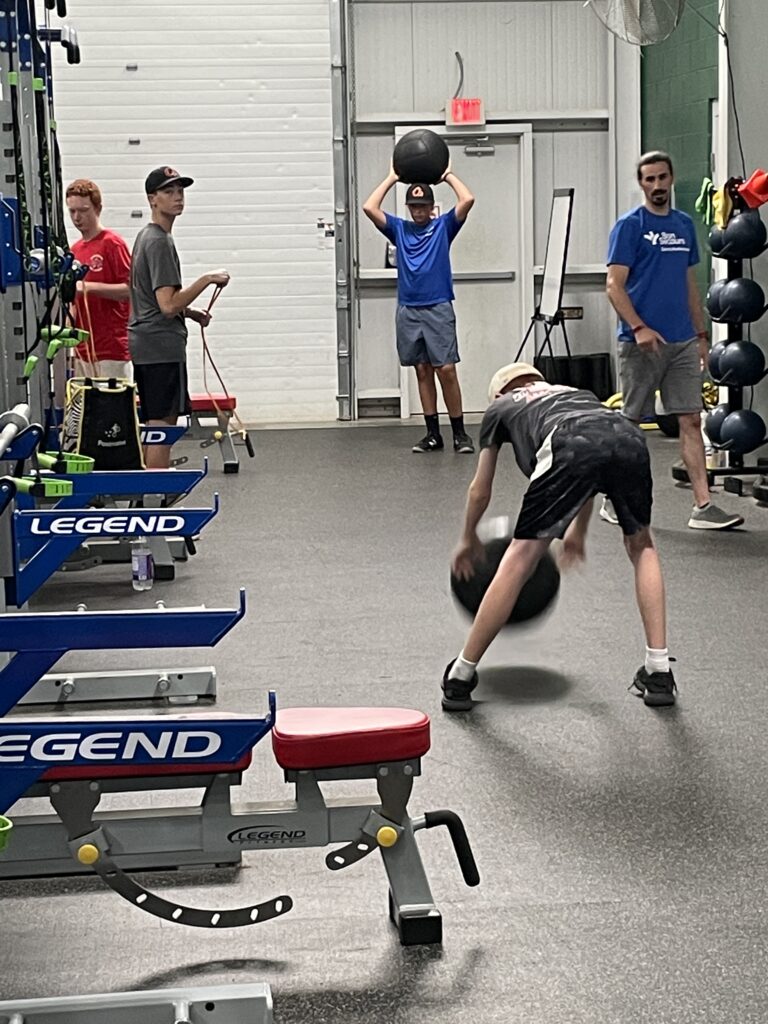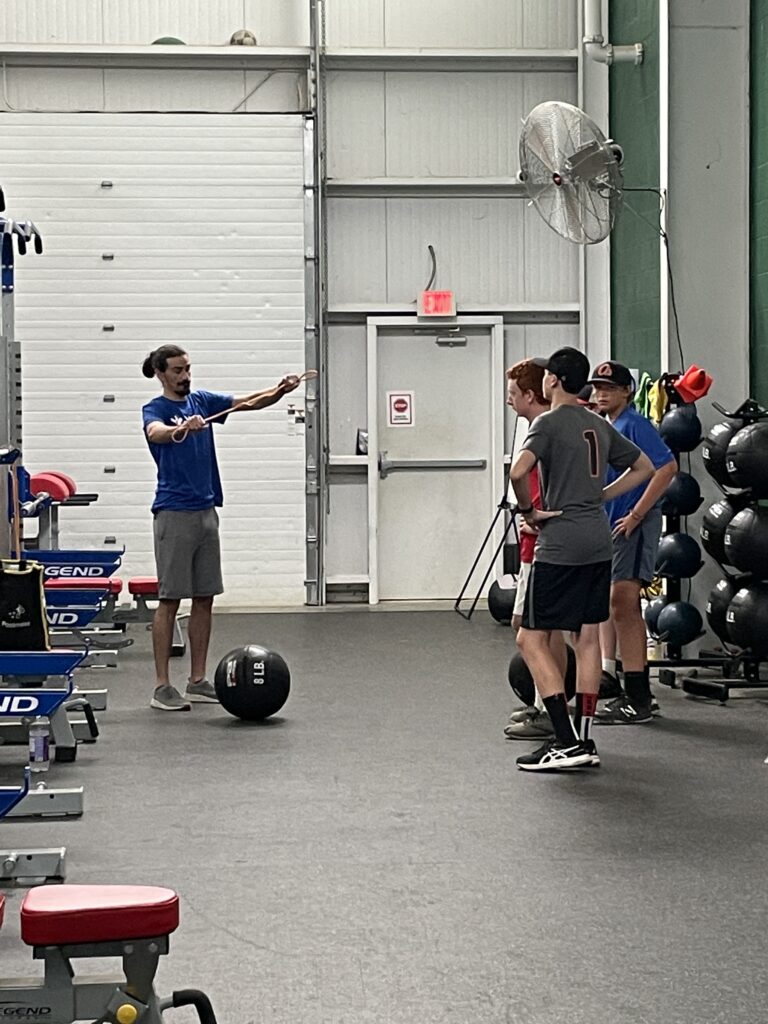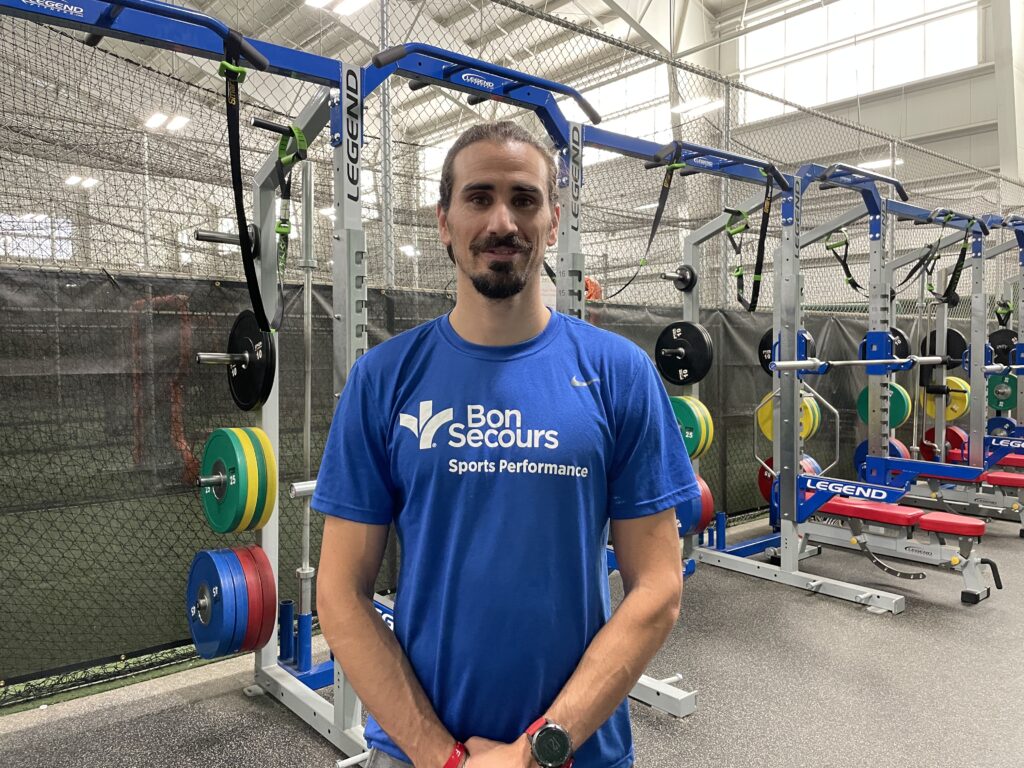Bon Secours Sports Performance of Richmond is offering Functional Movement Screenings (FMS) at the TSI Training Center the week of 8/29.
Screenings will be offered in groups of 5 at 5:00, 6:00, and 7:00 pm. Assessments will be provided upon the conclusion of the session and provide a comparison to baseline numbers based on their age group.
Register today thru EZ Facility!
The FMS has become one of the most important tools in a strength coach’s arsenal to help judge the durability of a professional athlete.
The following outlines the basics of the Functional Movement Screen along with some of the compelling benefits it offers.
What Is The Functional Movement Screen?
The functional movement screen is a series of 7 movements that require a balance of mobility and stability.
Each movement is scored from 0 to 3:
0 = pain during movement
1 = failed movement pattern
2 = passed but with some compensations
3 = passed with no compensations
Out of a total score of 21, the average scores ranges from about 13-15, depending on age and fitness level. A score of 1 on any screen means that movement should not be trained, but should be corrected. A score of 0 requires that a competent medical professional should perform an evaluation. An asymmetry such as a score of 1 on one side and a 2 on the other side is the most immediately important movement dysfunction to correct.
The FMS is not designed to identify the specific reason why a faulty movement patterns exists. There can be tons of possible reasons, but identifying there is a problem is the first step toward correcting it. The screen is also not a training tool, but a rating and ranking tool.
 What Are The Benefits Of A Functional Movement Screen?
What Are The Benefits Of A Functional Movement Screen?
1) Injury Prevention
The FMS may help you identify movement dysfunctions before they cause an injury.
In a report, which analyzed 25 research studies on the FMS, Dr. Butler of Duke University stated:
“The Functional Movement Screen is a reliable tool that can be used to identify individuals who are more likely to become injured.”1
2) Pain Identification
If you experience pain as you are completing any of the 7 movements, or 3 clearing tests, you need to get checked out by a competent medical professional. The FMS may be able to identify that something is wrong before the injury gets even worse. Surprisingly, as many as 20% of people report pain during the assessment.
3) Systematic Approach
Because the FMS uses a simple checklist with clearly defined criteria, it’s easy for coaches administering the screen to arrive at a reliable score that can be repeated with other coaches.
4) Repeatable
Because the FMS is a standardized screen, you can continue to get tested over time to assess your progress or identify movement dysfunctions that may arise.
You can set a schedule of getting tested every month, or every quarter, or maybe just annually.
Re-testing can help you identify improvements you make. If you score a 0 on any of the screens, your doctor should not clear you for exercise that involves whatever movement screen you failed. If you score a 1 on any screen, your primary focus should be to bring that score up to a 2 to help prevent injury.
5) It’s A Corrective Exercise System
Not only can the FMS help you identify dysfunctional movement patterns, it may help you correct them as well. So the FMS is really a comprehensive screening and corrective exercise system. This system is referred to as the FMS Training Cycle, which is easily worthy of a separate article.
If you get a 1 on a movement pattern, the FMS offers other movements to complete to help correct that pattern. These new movements are like an extension of the initial screen. It may only take 5 minutes to improve your score from a 1 to a 2.
 The Functional Movement Screen is Not A Diagnostic Tool
The Functional Movement Screen is Not A Diagnostic Tool
While the FMS can be very useful, it’s important to understand the FMS is a screen, not a diagnostic tool. In other words, the FMS may not be able to identify the root cause of whatever is causing you to score poorly on the test.
For example, if you are unable to complete an overhead squat, there are many possible causes such as tight calves, weak core musculature, tight hip flexors, shoulder tightness etc.
With that said, corrective exercises may help correct whatever underlying issue you have. So if your overhead squat improves because of corrective exercise, the root cause doesn’t matter.
(For additional reference, please see our Bon Secours Sports Performance FAQs)

